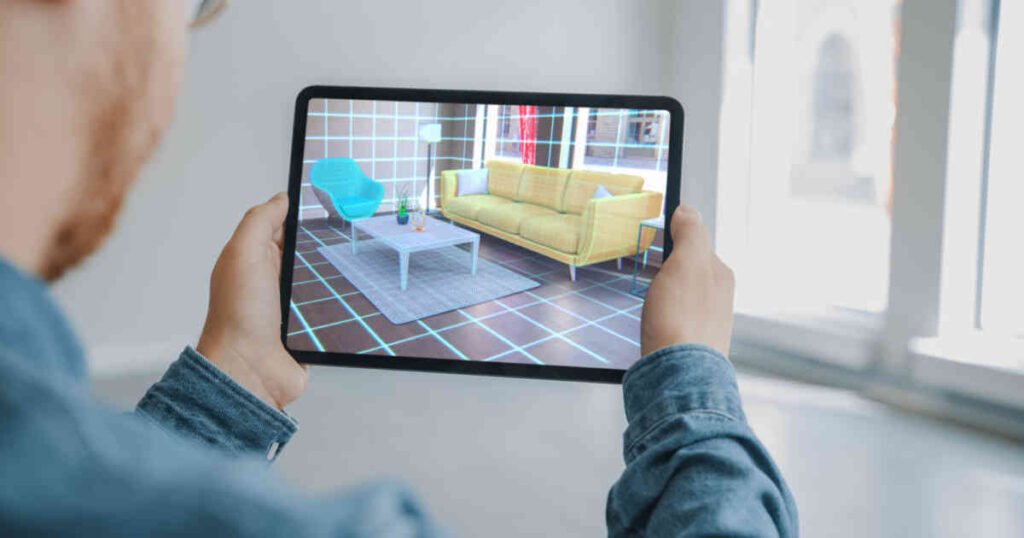As the name suggests, the technology known as augmented reality (AR) combines the actual environment with digital content to provide users a fresh and improved experience. AR uses a gadget like a smartphone or tablet to overlay digital information over the actual world, in contrast to Virtual Reality (VR), which produces a fully immersive digital experience.
Although the idea of augmented reality (AR) has been around since the 1960s, it wasn’t until the creation of cutting-edge mobile devices and AR software that the technology was made more generally available and employed. AR is currently employed for a variety of purposes, including gaming, entertainment, and e-commerce.
Uses for augmented reality
One of the most well-known uses of AR is in the gaming sector, where players may use their mobile devices to play games that combine parts of the digital and physical worlds. For instance, a player might utilise the camera on their smartphone to scan the area around them. This scan becomes the game environment, which then incorporates digital aspects into the real world.
Another application for augmented reality is in education, where it can make learning more interesting and interactive. For instance, using augmented reality (AR) to make textbook material come to life allows students to explore and engage with digital content in ways that are not possible with conventional teaching techniques.
AR is also employed in e-commerce and advertising, where it can make shopping more interesting and participatory. Customers can, for instance, digitally try on apparel or visualise how a piece of furniture would look in their house using mobile devices before making a purchase.

Augmented reality’s benefits
The accessibility of AR is one of its main benefits. In contrast to VR, which calls for specialist gear like VR headsets, AR can be used with a mobile smartphone, making it more convenient and accessible for users.
Another benefit of AR is its capacity to complement, as opposed to replace, the real world. Users are able to view the real world and digital content in a way that is not feasible with conventional types of technology, which can result in a more engaging and memorable experience.
Additionally, AR has the power to completely change how users engage with digital material. AR has the potential to make technology more approachable and user-friendly by employing a device that is familiar and intuitive, like a smartphone. This is crucial for people who might lack the technical know-how or experience needed to work with more conventional forms of technology.
Issues with Augmented Reality
The gadget required is one of AR’s key drawbacks. Users need a compatible device, such a smartphone or tablet, in order to experience AR, which may be a hurdle to adoption for some people.
The calibre of the digital content is another AR constraint. The quality of the digital material, which may not always be precise or current, determines the accuracy and dependability of AR content.
Furthermore, because AR technology is still in its infancy, its social and ethical ramifications have not yet been thoroughly investigated and comprehended. Unintended consequences of incorporating AR technology into daily life could include distractions and a loss of awareness of the outside world.
Conclusion
Since its infancy in the 1960s, augmented reality technology has advanced greatly and is still rapidly developing. AR is currently employed for a variety of purposes, including gaming, entertainment, and e-commerce.
Through a more seamless and intuitive experience, augmented reality (AR) has the power to completely change how people engage with digital content. A more interesting and lasting experience can be had by enhancing rather than replacing the real world.
But AR technology has certain drawbacks as well. Important things to think about while using AR technology include the need for a compatible device, the calibre of the digital information, and the social and ethical ramifications. In addition, incorporating AR technology into regular activities may have unforeseen effects including distraction and decreased awareness of the outside world.
Despite these drawbacks, AR has the ability to provide both individuals and companies new and exciting options. It will be interesting to observe how augmented reality technology is used and how it affects our daily lives as it develops and gets better.
It will be crucial for people and businesses to take into account the advantages and restrictions of AR technology and to use it in a responsible and ethical manner as the technology advances and becomes more widely available. As a result, AR could develop into a significant tool for improving our lives and the environment.
To sum up, augmented reality has the power to alter how we engage with digital media and the outside environment. AR has the potential to offer novel and fascinating experiences for people and companies alike, whether it’s through gaming, education, advertising, or e-commerce. It will be crucial for people and businesses to think about the advantages and limitations of AR technology and to use it in a responsible and ethical way as the technology develops and gets better.
The moment has come to begin exploring the possibilities of this innovative technology, whether you’re a company trying to benefit from AR or a person interested in how AR may improve your life. AR has the potential to change how we interact with our surroundings by fusing the real world with digital content. It can also open up new and exciting options for both individuals and businesses.




